HTC One max Review - It's Huge
by Brian Klug on October 28, 2013 10:00 AM EST- Posted in
- Smartphones
- HTC
- Mobile
- One
- Snapdragon 600
- Android 4.3
- One max
The One max joins a small but growing list of phones that include a fingerprint scanner for unlocking the device. I’ll leave the discussion about whether fingerprints are fundamentally usernames or passwords for another day, but fingerprint scanners seem to be in vogue right now for mobile phones. You could make the case that the perceived increase in security that comes with fingerprint scanners is both an enterprise or consumer play, again I’ll leave that philosophical discussion for another day. I remember the Motorola Atrix and its fingerprint scanner being a big deal a while ago, since then we’ve had the iPhone 5s dramatically reintroduce the fingerprint scanner and now the One max follow suit.
The One max fingerprint sensor is a swipe type, meaning there’s some kind of strip sensor inside that you swipe your finger across. Sliding your finger over this strip allows the module to scan a 2D region and extract features that are then used to identify a fingerprint. The One max hides this scanner inside a black square that’s slightly recessed on the back of the device, just beneath the camera. I’m reminded somewhat of the LG G2 and its rear-mounted power and volume buttons which also sit just beneath the rear-facing camera. Perhaps that’s a missed opportunity for LG, which could have also gone with a swipe type sensor in its power button. On the One max anyhow there’s no button, just the sensor. Although the fingerprint sensor is recessed slightly, it’s somewhat difficult to locate with just one’s index finger, something that results in inadvertent smudging of the rear-facing camera cover glass, something that didn’t happen as much with the G2 because there’s a larger lip and easily locatable bump.
The placement of the fingerprint sensor makes sense given that of the power button. As stated earlier for right handed users this means your index finger sits naturally near the sensor if your thumb is on the power button. Since the fingerprint button still requires activation to unlock the One max, you still need to press power to turn it on before you can swipe your finger and finally unlock it. I find myself wishing the fingerprint sensor was itself a button, something like the iPhone 5s, so unlocking could be as simple as pressing and swiping with the same finger. On the iPhone 5s the best activation pattern is pressing the home button and leaving the finger in contact with the button.
Setup requires you to set a passcode, after which a few training swipes trains the sensor for the finger you’ve chosen. Although the animation that plays shows the finger aligned along the long axis of the phone, for greater accuracy I trained the One max with my finger at the angle it would naturally be given my thumb on the power button. The only requirement given the swipe sensor is that the slide motion is straight down and not skewed.
The One max fingerprint sensor allows for up to 3 fingers to be paired, each able to either unlock or have the option of both unlocking and launching an application. I like the idea of fingerprints as shortcuts, something the iPhone 5s implementation lacks, but three fingers seems like a curiously low number given the ten digits humans have to work with. On the other hand, the placement of the button really limits you to middle and index fingers being viable options. In terms of functionality, although Apple doesn’t yet use fingerprints as shortcuts, Apple does use the fingerprint scanner to authenticate iTunes, iBooks, and App Store purchases, something HTC can’t quite do with the One max for Google Play purchases, at least until Google makes an API for it.
I initially trained the fingerprint sensor with my index finger being swiped straight down, and had some issues with unlocks requiring multiple swipes. Doing finger enrollment and training at an angle closer to how I actually swipe it naturally (at an angle) made the accuracy better, but the reality is that unlocking the One max still requires multiple tries more often than not. There isn’t much processing latency after a scan, but I had hoped the One max sensor would be tap and hold rather than swipe given its shape. I’m not clear what suppliers are involved for the sensor, but I’m told the One max also securely stores just the extracted features and not the fingerprint images (which is a no brainer). I haven’t delved much into the infrastructure used to secure the fingerprint features yet either. I’m also not sure whether the One max learns additional parts of the finger which wasn’t part of initial training the same way Apple’s does.
Although I don’t think anyone has totally nailed the fingerprint sensor yet on a device, the One max implementation definitely is further from perfection than Apple’s. Although it does work reasonably well, it still isn’t the transparent kind of convenience that I feel will compel users who ordinarily wouldn’t have to used a passcode to go and use the fingerprint scanner. I’ve continued using the fingerprint scanner on the One max, however.


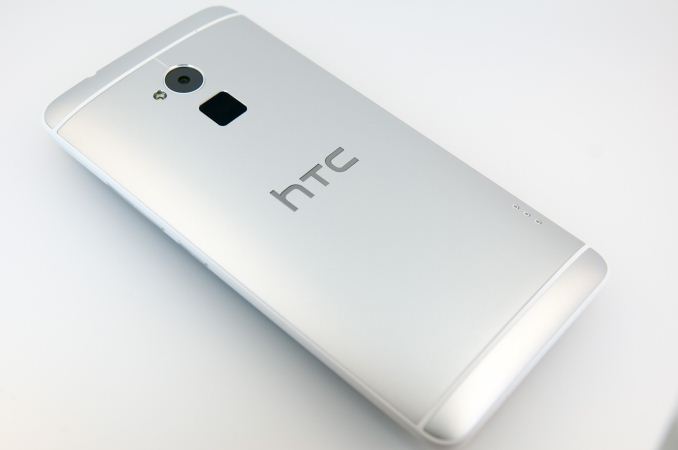
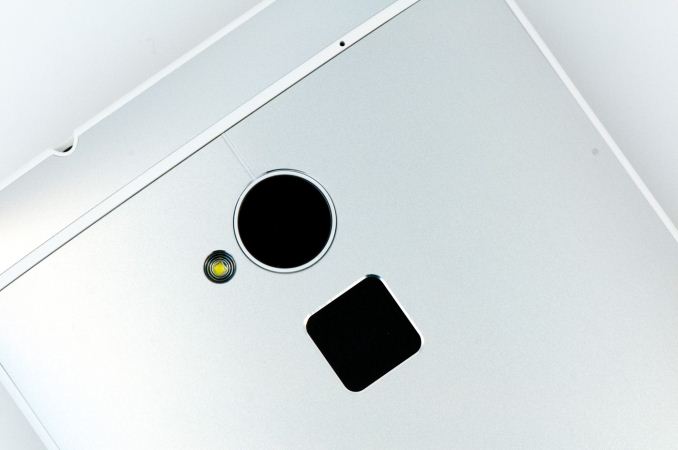
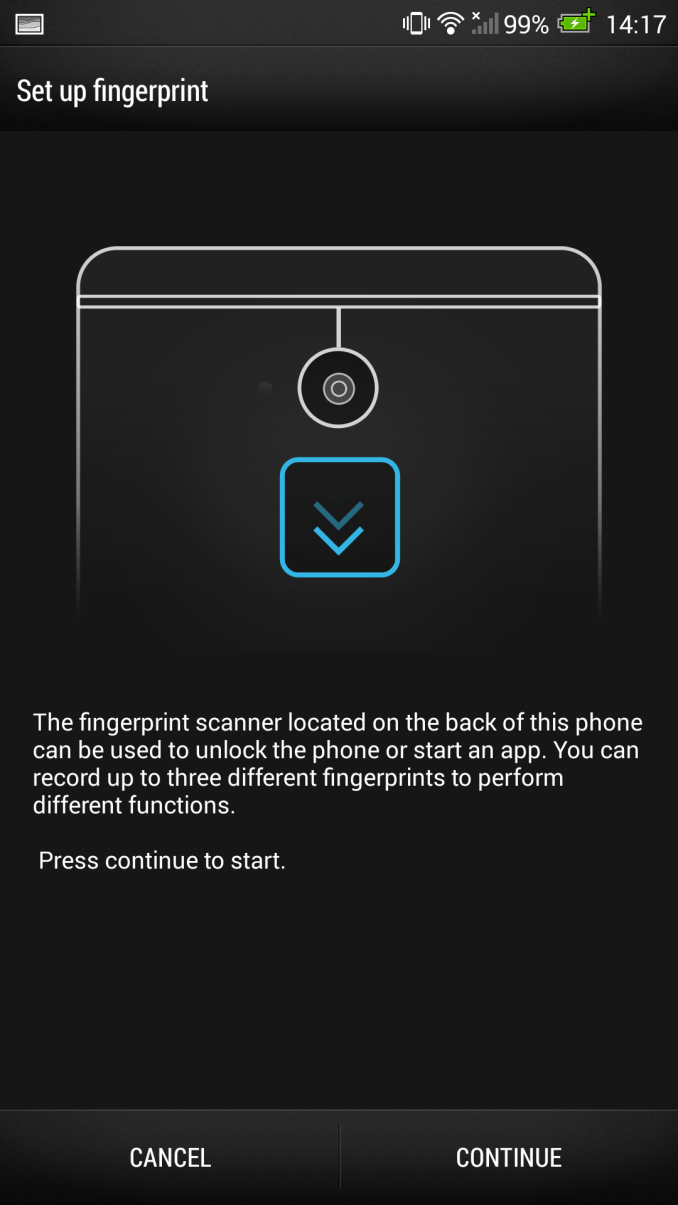
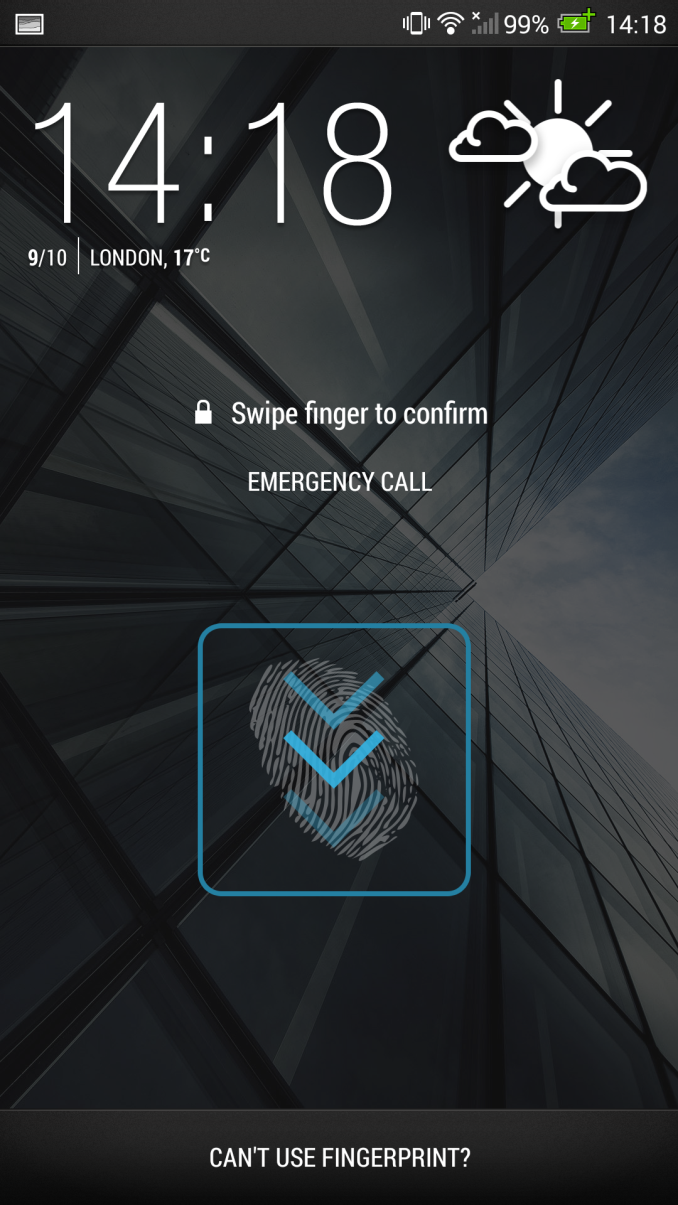

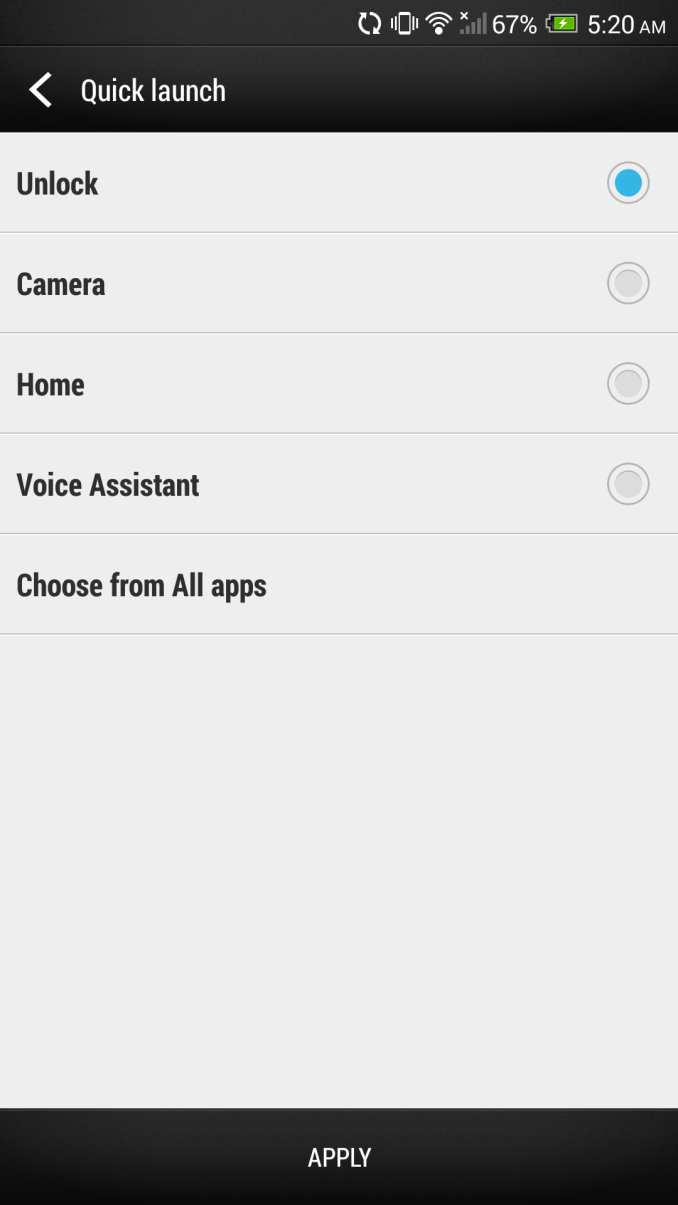








197 Comments
View All Comments
BlakKW - Monday, October 28, 2013 - link
+2cbrownx88 - Monday, October 28, 2013 - link
+3MarcSP - Monday, October 28, 2013 - link
+4hrrmph - Tuesday, October 29, 2013 - link
+5The Saint - Monday, October 28, 2013 - link
"I’ve said my part already on microSD cards and the fact that they’re going the way of the dodo in smartphones, I just don’t need one anymore, and definitely not at the expense of build quality. It is convenient not having to use a SIM ejector tool though, even if I carry one around all the time anyways. For the incredibly small percentage of users that clamors for an SD card every single smartphone launch, it’s at least one point which won’t be belabored so tiresomely this time."That's funny. Seems to me if there's one thing that seems to be going the way of the dodo, it's Android manufacturers like HTC who think prettiness and premium feel are more important than functionality. It will be nice once they go out of business to be able to stop hearing from that tiresome segment of pretend geeks who treat their cellphones like how divas treat their purses - as fashion accessories.
Meanwhile, Samsung will continue laughing by being both the only player that focuses on functionality, and the only player that makes money in the Android world.
nerd1 - Monday, October 28, 2013 - link
Apple charges $100 for 16GB memory and you can find 32GB micro SD at around $15. I wonder why most reviewers conveniently ignore this fact and just compare the baseline price of the products. I can do the math and I won't buy any device without expandability.Drumsticks - Monday, October 28, 2013 - link
I'm not sure that expandibility is the biggest selling point for galaxy phones outside of tech enthusiasts. Most people are not movie hogs etc and find 32GB reasonable. Business users and media enthusiasts on the other hand, would. But they don't represent everyone. Especially with streaming.I think its more brand name appeal and how much more recognizable they are. After all, apple does even better, and its not like they've ever offered MicroSD support.
personally I just think 16GB needs to die, and 32 should be standard up to 128GB in $50 increments max using high quality flash.
Spunjji - Monday, October 28, 2013 - link
Agreed about 16GB needing to die. But why would it when plenty of companies still make an extra $100 per sale by forcing people to upgrade to the minimum serviceable level? At least the Micro SD slot, with all its failings, allows some sort of other option. "pay as you grow" instead of throwing the whole shebang away when your storage needs outpace the crappy little chip soldered into your device.The0ne - Monday, October 28, 2013 - link
My decision on a phone is1. Screen size and resolution
2. MicroSD slot
I use my phone more as a e-reader and media device than a phone. That's not to say I don't use it as a phone normall, I do but it's not all that it does. Duh? Having the MicroSD slot for expansion is Godsend. All my books and technical PDF's are there. All my music, videos and photos are there (just the favorite ones), and so forth.
Why wouldn't you want to have all of those on your phone? It is convenience for me. One device to do what I like to use it for.
Davidjan - Tuesday, October 29, 2013 - link
Agree with you. We can use OTG reader to expand storage like Meenova MicroSD Reader if we want: http://goo.gl/U6IyY